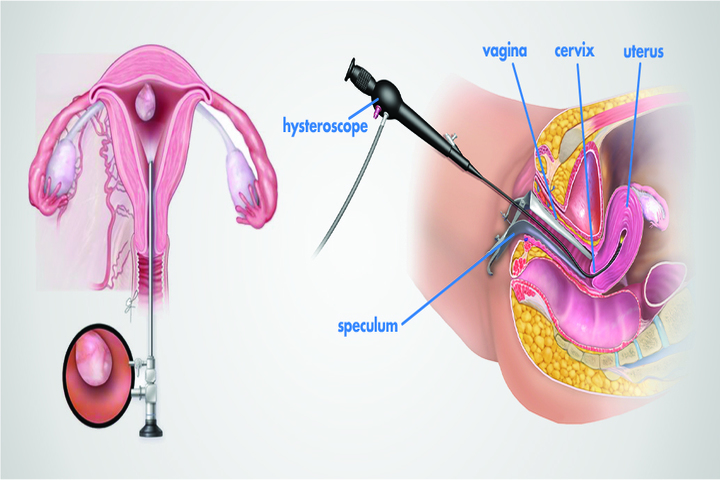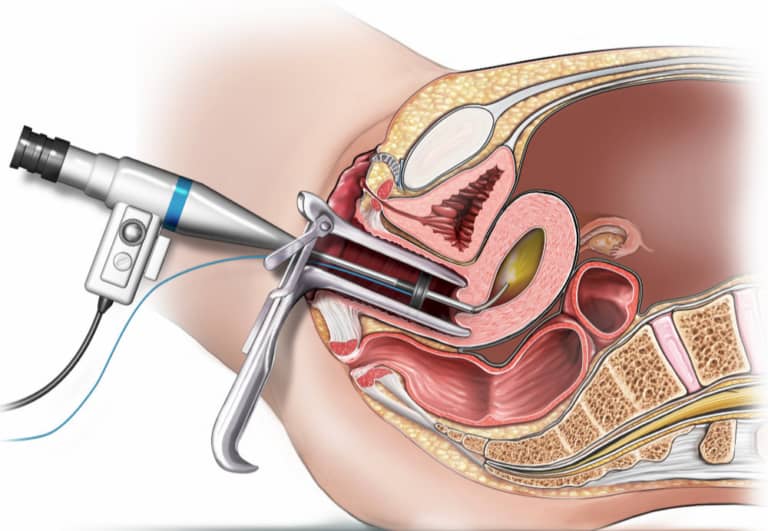
Hysteroscopy
It’s studying what is inside the womb with an excellent telescope. A small telescope is introduced via the vagina or the cervix into the womb chamber. It is usually done with general anaesthesia. The surgeon is then careful to examine the wall of the womb. The camera images connected to the telescope will be projected onto a TV screen to allow you to view the pictures whenever you like. You are likely to require a biopsy to examine the womb’s lining. The procedure is carried out by using a small sampler after the procedure. The sampling process takes between 10 and 20 minutes but may cause an uncomfortable sensation similar to cramps and then subsides quickly. It could be that a polyp (an excess of the womb’s lining) might be discovered. It can be removed when you perform a Hysteroscopy.


Diagnostic Hysteroscopy permits the doctor to examine the shape, size, and lining of the uterus to identify any irregularities that could affect fertility or contribute to various gynecologic problems. Under anaesthesia, a small device for viewing, referred to as the hysteroscope, is placed in the vagina and then gently moved through the cervix to the uterus. A carbon dioxide solution, or liquid, is introduced through the hysteroscope to expand the uterus. When the uterus expands, the camera and light on the hysteroscope enable the doctor to view the endometrium’s structure (the lining that surrounds the uterus) and the fallopian and ovary tubes through a video screen.
Do You Need to Consider an Alternative to Endometrial Ablation? A procedure called endometrial ablation can be a suitable alternative to Hysteroscopy in mothers who suffer from extreme or excessive bleeding when fibroids or any other intrauterine pathology are not suspected as the cause. It can be performed as an outpatient
What are the advantages of Hysteroscopy?
In comparison to other, more extensive procedures, Hysteroscopy could offer the following benefits:
- Faster recovery time
- Shorter hospital stay.
- Less pain medication is required following surgery.
- Elimination of the hysterectomy.
- It is possible to avoid “open” abdomen surgery.
How secure is Hysteroscopy?
Hysteroscopy is generally a secure procedure that is relatively safe. But, like any procedure, complications can occur. Hysteroscopy-related complications can occur within less than one percent of the cases and maybe:
- Anaesthesia is associated with risks.
- Infection.
- A lot of bleeding.
- Intrauterine scarring.
- Reaction to the drug used to increase the size of the uterus.

